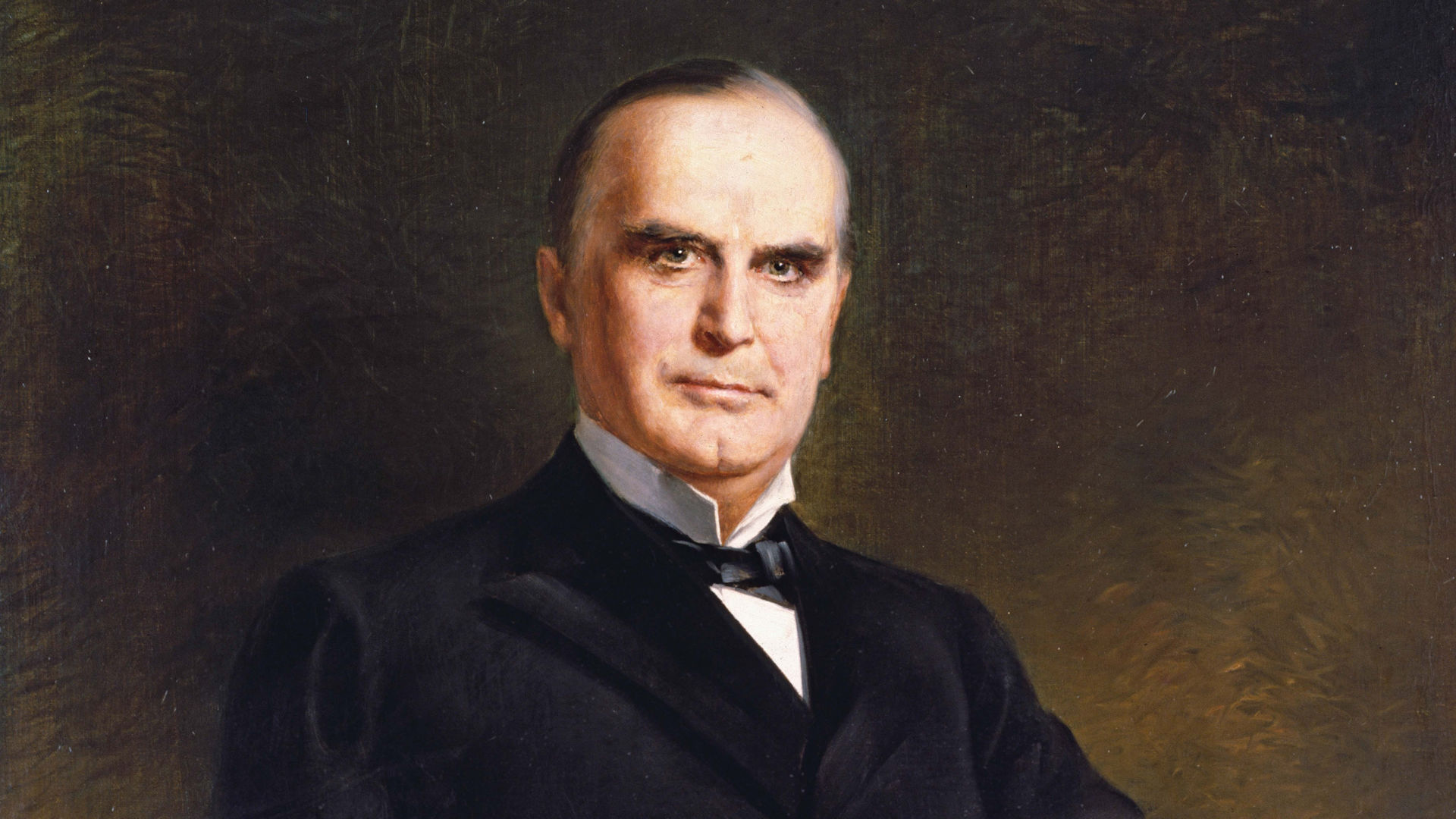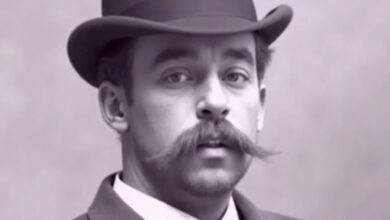The Assassination of William McKinley
On a September afternoon in 1901, President William McKinley stood inside the Temple of Music at the Pan-American Exposition in Buffalo, New York. He was there to greet the public, offering his hand and a warm smile to anyone who wished to meet the President of the United States. In an era before the Secret Service provided the kind of close protection we know today, McKinley was only lightly guarded. The atmosphere was festive, the crowd was eager, and the President seemed at ease.
But standing in that same crowd was a man with murder on his mind. Leon Czolgosz, an anarchist and the disillusioned son of Polish immigrants, was determined to make his mark on history. Concealed in his hand was a revolver, hidden beneath a handkerchief as though he had an injured hand. When McKinley extended his hand in greeting, Czolgosz raised the weapon and fired. Within moments, the President lay mortally wounded, and America was once again confronted with the violent loss of a leader.
The assassination of William McKinley was not only a tragedy for the man and his family, but it also marked a turning point in American history. It ushered in the presidency of Theodore Roosevelt, accelerated changes in security for public officials, and highlighted the growing anxieties of a nation at the dawn of the 20th century.
William McKinley’s Presidency
To understand the impact of McKinley’s death, it helps to know who he was as a leader. Born in Ohio on 29 January 1843, McKinley served with distinction in the Union Army during the Civil War before turning to politics. By the 1890s, he had become one of the most prominent figures in the Republican Party.
Following his inauguration on 4 March 1897, McKinley presided over a period of rapid industrialisation and economic growth. He supported protective tariffs to encourage American manufacturing and favoured the gold standard in currency. But his presidency is most remembered for foreign policy.
In 1898, McKinley led the nation into the Spanish-American War, which resulted in the United States gaining territories including Puerto Rico, Guam, and the Philippines, while also establishing control over Cuba. The victory transformed the U.S. into a global power. Though criticised by some for imperial ambitions, McKinley was broadly popular, winning re-election in 1900 alongside his dynamic new vice president, Theodore Roosevelt.
McKinley was known for his calm, steady leadership. He was not a fiery orator, but he was approachable and believed in maintaining a close relationship with the American public. That very openness, however, would ultimately cost him his life.
Leon Czolgosz: The Assassin
Leon Czolgosz was born in Michigan in 1873 to Polish immigrant parents. His early life was marked by poverty and instability. He worked in factories and steel mills but struggled to hold steady employment. Over time, he grew increasingly resentful of industrial capitalism and the wealth inequalities that defined the Gilded Age.
Czolgosz was drawn to anarchist ideas, which were spreading in Europe and America at the time. Anarchists believed that governments were oppressive and corrupt, and some advocated violence as a way of dismantling authority. In 1901, Czolgosz attended lectures by anarchist leaders, including Emma Goldman, whose fiery rhetoric left a strong impression on him.
By the summer of that year, Czolgosz had convinced himself that McKinley represented everything wrong with the government, wealth, power, and imperialism. Killing the President, he believed, would strike a blow for the oppressed.
The Pan-American Exposition
The Pan-American Exposition in Buffalo was a showcase of progress and technology, with electric lights illuminating the fairgrounds at night, a novelty for many visitors. McKinley, who enjoyed travelling and meeting the public, saw the event as an opportunity to highlight American achievement and foster goodwill.
On 5 September 1901, McKinley delivered a significant speech at the exposition, calling for greater trade and international cooperation. The following day, he attended a public reception at the Temple of Music, where citizens could meet him in person. Despite warnings from advisors about potential risks, McKinley insisted on greeting the public. He had done so many times before and felt it was part of his duty.
The Assassination
The reception began in the afternoon of 6 September. A long line of people filed past the President, shaking his hand. McKinley’s aides and a handful of Secret Service agents were nearby, but security was minimal compared to modern standards.
In line was Leon Czolgosz, his revolver concealed under a white handkerchief wrapped around his right hand. When he reached McKinley, the President extended his hand with a smile. Instead of shaking it, Czolgosz fired two shots at close range.
The first bullet grazed McKinley’s chest. The second struck his abdomen, passing through his stomach and lodging in his back muscles. Chaos erupted as the President collapsed. James Parker, an African American man waiting in line, tackled Czolgosz, while guards beat him and dragged him away. McKinley, bleeding but conscious, reportedly told his aides, “Go easy on him, boys.”
The Aftermath
McKinley was rushed to the exposition’s hospital building, which was poorly equipped for such a serious injury. Doctors operated and managed to stabilise him, but the second bullet had caused severe internal damage. Unable to locate it, the surgeons stitched him up and hoped for recovery.
At first, McKinley appeared to be improving. His condition rallied over the next several days, and he spoke with family and staff. His wife, Ida, who was in fragile health, stayed close by his side. Newspapers printed optimistic reports, and Americans believed their President would survive.
But by 13 September, his condition worsened dramatically. Gangrene had set in around the wound, and sepsis spread through his body. The limits of early 20th-century medicine sealed his fate. On the morning of 14 September, William McKinley died at the age of 58. His final words were said to be, “It is God’s way. His will be done. Not ours.”
Theodore Roosevelt Becomes President
McKinley’s death elevated Vice President Theodore Roosevelt to the presidency. At just 42 years old, Roosevelt became the youngest President in U.S. history. His energetic style and reform agenda would dominate the next decade, ushering in the Progressive Era.
Roosevelt later acknowledged the weight of the moment, but he also saw it as his duty to carry forward McKinley’s legacy. The assassination, therefore, not only ended one presidency but also transformed American politics.
Trial and Execution of Leon Czolgosz
Czolgosz was quickly indicted for the murder of the President. His trial began just over a week after McKinley’s death. The proceedings were swift, lasting only eight hours over two days. The defence presented little argument, and Czolgosz himself remained calm and unrepentant.
He admitted to the crime, stating that McKinley was “the enemy of the people” and that he had done his duty as an anarchist. The jury deliberated for less than 30 minutes before returning a guilty verdict. He was sentenced to death.
On 29 October 1901, Leon Czolgosz was executed in the electric chair at Auburn Prison in New York. His final words were: “I am not sorry for my crime. I am sorry I could not see my father.” After his death, his body was doused in sulfuric acid to ensure rapid decomposition, and his personal belongings were destroyed.
Impact on Security and Society
The assassination of William McKinley shocked the nation. It was the third presidential assassination in just 36 years, following Abraham Lincoln in 1865 and James Garfield in 1881. Americans were horrified by the repeated vulnerability of their leaders.
The event led to significant changes in presidential security. The Secret Service, which had previously focused primarily on investigating counterfeiting, took on the permanent responsibility of protecting the President. McKinley’s death marked the beginning of the modern era of presidential security.
The assassination also highlighted the tensions of the time. Industrial unrest, social inequality, and the growth of radical political movements all contributed to an atmosphere of unease. While anarchists were a small minority, their violent acts drew public fear and harsh crackdowns from authorities.
For the Jewish and immigrant communities, the case was a reminder of how easily suspicion and hostility could be directed at outsiders. Although Czolgosz acted alone, his background as the son of Polish immigrants and his ties to anarchist circles contributed to wider prejudices.
McKinley’s Legacy
Although overshadowed by the dramatic events of his death and the towering presidency of Theodore Roosevelt that followed, William McKinley left behind a significant legacy. His leadership during the Spanish-American War reshaped America’s role in the world. His steady hand guided the nation through a period of economic transformation, and his calm, approachable style endeared him to many.
The tragedy of his assassination lies not only in the violence of the act but also in the sense of interrupted potential. McKinley was a stabilising figure at a time of significant change. His loss thrust the nation into uncertainty, but it also set the stage for the reforms of the Progressive Era.
Final Word
The assassination of William McKinley is remembered as both a personal tragedy and a pivotal moment in American history. It revealed the vulnerabilities of public life in a nation grappling with rapid change and radical ideas. It underscored the dangers of political violence, while also reminding Americans of the need to protect both their leaders and their democratic institutions. In Buffalo in 1901, amid the bright lights and optimism of the Pan-American Exposition, a single act of violence brought darkness to the nation. From that moment forward, the presidency itself would never be seen the same way again.
The Assassination of William McKinley FAQ
William McKinley was the 25th President of the United States, serving from 1897 until his assassination in 1901. He led the nation during the Spanish-American War and oversaw a period of economic growth.
He was shot on September 6, 1901, at the Pan-American Exposition in Buffalo, New York, while greeting the public inside the Temple of Music.
Leon Czolgosz, a self-proclaimed anarchist, shot McKinley twice at close range. He was captured immediately, tried, convicted, and executed in the electric chair within two months.
It marked the third presidential assassination in U.S. history, led to the permanent assignment of the Secret Service to presidential protection, and elevated Theodore Roosevelt to the presidency, shaping the Progressive Era.






